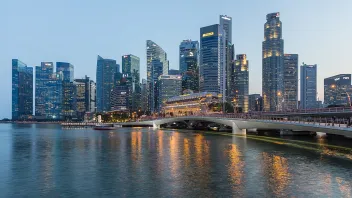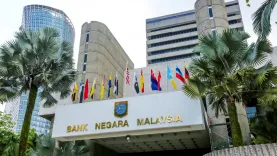Exclusive
Why the hybrid work model is here to stay for banks
Why the hybrid work model is here to stay for banks
Banks stand to lose on cost savings and even on attracting talent if they stubbornly push for the return of pre-pandemic work set-up.
Philippines’ newest neobank aims to disrupt the industry with a dash of personality
Tonik Digital Bank wants to become the first bank brand in the country with “a sense of humor.”
How does Taiwan’s bilingual push enhance the competitive edge of its banks?
We spoke with local banks and the regulator to ask how the bilingual services enhances the financial industry's global competitiveness.
Global banks on a hiring craze as they vie for rich Asians’ assets
HSBC, Goldman Sachs, and Citi are all eyeing a piece of the region's trillion-dollar financial market.
Japan’s top internet-only bank seeks to scale Taiwan’s banking industry
Rakuten International Commercial Bank leverages its parent’s 20 years’ experience in Japan and its extensive global network of companies and partners.
Mazars partners welcomed to ABF Awards judging panel
In this exclusive interview, Justin Tan and Sean Choo also share their thoughts on the “new normal” of Post-COVID-19 banking.
Singapore steps up efforts to boost FX ecosystem as Hong Kong closes in fast
Citi launched a pricing engine that cuts the time it takes to route a trade between Singapore to Tokyo.
400 million wearables could be converted for smart payments push by 2022
Mastercard and Tappy are using token technology to allow payments using accessories.
How UnionBank is future-proofing its workforce against digital disruptions
In anticipation of the future of work, it launched UnionBank University about a decade ago to stay ahead.
How kakaobank successfully cracked the profitability code two years after rocket launch
In the first half of the year ended June 31, kakaobank hauled net income of KRW10b ($8.58m), booking net profit for the first time following a protracted loss-making period.
How GoBear expanded beyond financial comparison
It plans to enter partnerships to develop bespoke insurance solutions.
Malaysia's Islamic banks pull ahead of Indonesia in the digital curve
CIMB Group has pledged to invest $477m over the next five years to strengthen its digital platforms.
Banks rethink business models as fintechs play catch-up
To hold their ground against fintechs, banks are redefining themselves.
Incumbent lenders rethink business models in race against virtual banks
ZhongAn International, the company behind one of the city's virtual banks, weighs in on the opportunities and challenges ahead.
Hear the story behind DBS's digital transformation
Trevor Cheung, Managing Director of Ecosystems, Group Technology and Operations, will share the secrets to the bank's digital dominance.
How Singapore fintech Cashwagon serves Asia's underbanked
In July, Cashwagon launched a cash pick-up option in the Philippines.
How banks in Asia-Pacific can survive in an age of declining profitability
Cutting down branches and migrating banking services to online and mobile channels are key to keeping costs down.


















 Advertise
Advertise















Commentary
Why APAC banks must rethink their approach to the cost reduction challenge
Thailand backs major conglomerates for digital banks but risks stifling innovation